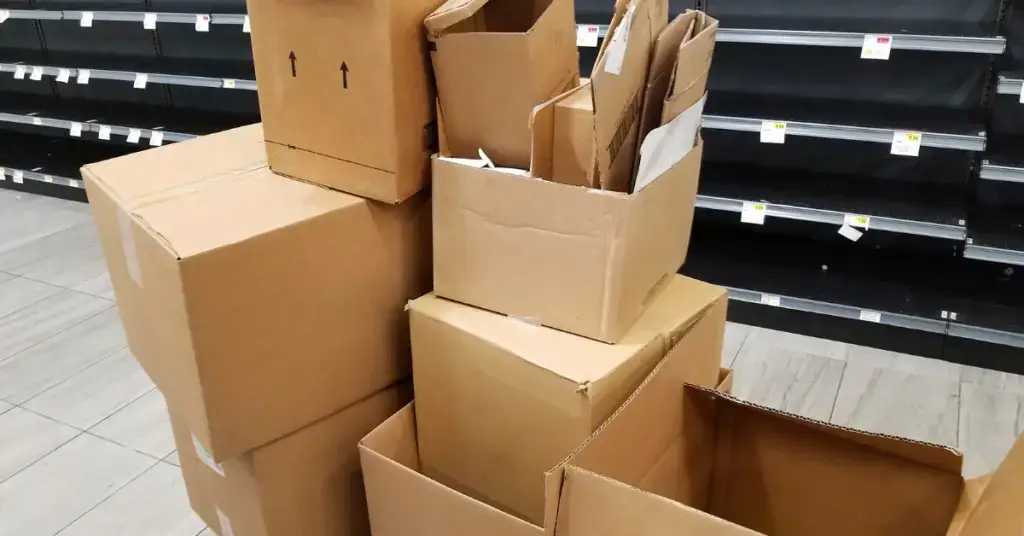In retail and supply chain management, one significant challenge that businesses often face is the issue of stockouts. A stockout occurs when a company runs out of a product that is in demand, leading to missed sales opportunities and potential customer dissatisfaction. This situation not only impacts immediate revenue but can also affect long-term customer loyalty and operational efficiency. In this blog, we’ll delve into the concept of stockouts, explore their causes, how to prevent them, and assess their impact on businesses. Whether you’re a retailer, a supply chain manager, or simply interested in understanding inventory management better, this comprehensive guide will provide valuable insights into handling stockouts effectively. We’ll be discussing:
- What is Stockout?
- What Causes Stockout?
- How Stockout Impact Businesses
- When Stockouts are a Good Thing
- 5 Ways to Reduce or Prevent Stockouts
What is Stockout?

A stockout occurs when a business runs out of a particular product that is in demand. This means that customers are unable to purchase the item they want, leading to missed sales opportunities and potential customer dissatisfaction. Stockouts can happen for various reasons, such as inaccurate inventory management, unexpected surges in demand, or supply chain disruptions.
For businesses, stockouts can be a significant issue, as they not only affect immediate sales but can also impact long-term customer loyalty. In today’s competitive market, customers have plenty of options, and if they can’t find what they need from one business, they are likely to turn to a competitor. Therefore, managing stock levels effectively is crucial to maintaining a positive customer experience and ensuring business success.
What Causes Stockouts?
Several factors can lead to stockouts, and understanding these causes is essential for businesses to mitigate the risk of running out of stock. Some common causes include:
- Inaccurate Inventory Management: Poor tracking of inventory levels can lead to stockouts. If a business doesn’t have an accurate record of how much stock they have on hand, they may not realize they are running low on a particular item until it’s too late.
- Supply Chain Disruptions: Issues within the supply chain, such as delays in production, shipping, or delivery, can result in stockouts. For example, if a supplier is unable to deliver raw materials on time, the manufacturer may not be able to produce enough products to meet demand.
- Unexpected Demand Surges: Sometimes, demand for a product can spike unexpectedly due to factors such as seasonal trends, promotions, or sudden changes in consumer preferences. If a business is unprepared for this surge, it may quickly run out of stock.
- Poor Forecasting: Inaccurate demand forecasting can lead to stockouts. If a business underestimates the demand for a product, it may not order enough inventory to meet customer needs.
- Production Issues: Problems in the production process, such as equipment failures or labor shortages, can slow down or halt production, leading to stockouts.
How Stockouts Impact Business

The impact of stockouts on a business can be significant, affecting everything from sales to customer satisfaction. Here are some of the key ways stockouts can hurt a business:
- Lost Sales: The most immediate impact of a stockout is the loss of sales. If a customer wants to buy a product that is out of stock, the business misses out on that revenue.
- Customer Dissatisfaction: Stockouts can lead to frustrated customers, especially if they are unable to purchase a product they were counting on. This can damage the business’s reputation and lead to negative reviews or word-of-mouth.
- Decreased Customer Loyalty: If customers experience stockouts frequently, they may choose to shop elsewhere in the future. This loss of loyalty can have long-term consequences for the business.
- Increased Costs: Stockouts can result in increased costs for the business. For example, if a business has to expedite shipping for back-ordered items or offer discounts to appease dissatisfied customers, these costs can add up.
- Supply Chain Disruption: Stockouts can also disrupt the supply chain, as businesses may need to make last-minute adjustments to production schedules, order rush shipments, or find alternative suppliers.
When Stockouts are a Good Thing
While stockouts are generally seen as negative, there are situations where they can be beneficial or even intentional:
- Creating Scarcity: Some businesses may intentionally limit the availability of certain products to create a sense of scarcity. This strategy can drive demand and make the product seem more exclusive or desirable.
- Clearing Out Inventory: A stockout can indicate that a business has successfully cleared out old or excess inventory, making room for new products. This can be part of a strategic effort to refresh the product lineup.
- Testing Demand: Stockouts can also be used as a way to test demand for a new product. If a product sells out quickly, it may indicate strong market interest, which can inform future production and ordering decisions.
- Strategic Price Increases: In some cases, businesses may use stockouts as an opportunity to raise prices. If demand remains strong even after a stockout, it could justify a higher price point.
- Avoiding Overproduction: For businesses with perishable goods, running out of stock can help avoid overproduction and reduce waste. It ensures that the business is not left with unsellable stock that could lead to financial losses.
5 Ways to Reduce or Prevent Stockouts

Preventing stockouts requires a proactive approach to inventory management and supply chain coordination. Here are five strategies businesses can use to minimize the risks:
- Implement Real-Time Inventory Tracking: Utilizing real-time inventory tracking systems can help businesses maintain accurate inventory records and quickly identify when stock levels are low. This allows for timely reordering and reduces the likelihood of stockouts.
- Improve Demand Forecasting: Investing in better demand forecasting tools and techniques can help businesses anticipate customer needs more accurately. By understanding trends and patterns in customer behavior, businesses can better plan their inventory levels.
- Strengthen Supplier Relationships: Building strong relationships with suppliers can help ensure a more reliable supply chain. Businesses should work closely with their suppliers to establish clear communication, negotiate favorable terms, and plan for potential disruptions.
- Diversify Suppliers: Relying on a single supplier can increase the risk if that supplier faces production or delivery issues. By diversifying suppliers, businesses can reduce this risk and ensure a more stable supply of products.
- Maintain Safety Stock: Keeping a buffer of safety stock on hand can help prevent stockouts during periods of unexpected demand or supply chain disruptions. While this may increase inventory costs, it can provide a crucial safety net for maintaining customer satisfaction.
Conclusion
Stockouts are a common challenge for businesses, but with careful planning and effective inventory management, they can be minimized. Understanding the causes and their impact on business performance is the first step in developing strategies to prevent them. By implementing the right tools and practices, businesses can reduce the risk of stockouts, maintain customer satisfaction, and protect their bottom line.
With Vencru, you get a comprehensive solution that simplifies inventory management. Vencru helps you track stock levels in real time, set reorder alerts, and manage your supply chain efficiently, all in one platform. Whether you’re looking to avoid lost sales or enhance your supply chain resilience, Vencru empowers you to take proactive steps to manage inventory levels, ensuring long-term success for your business.
Related Content








